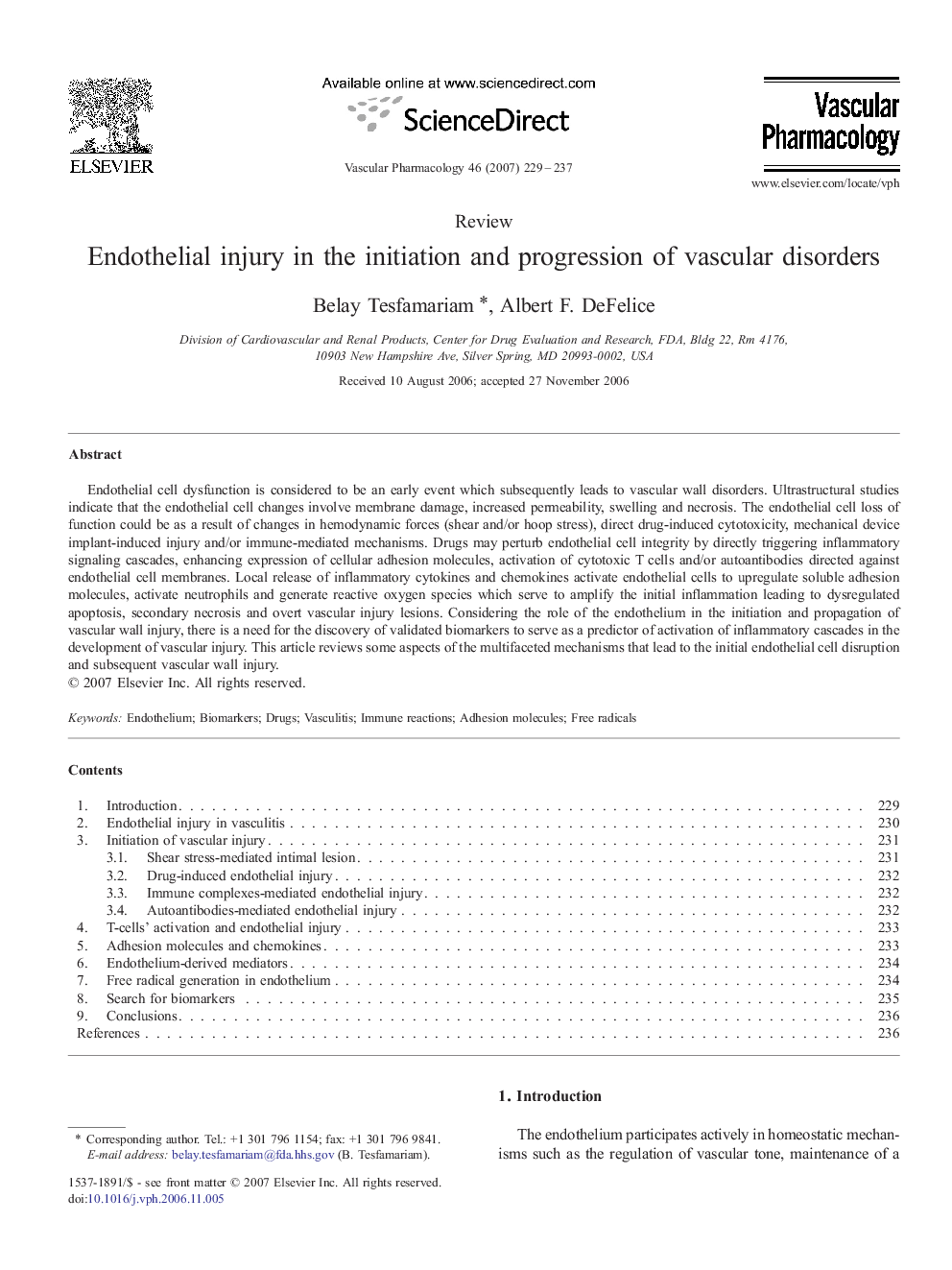| Article ID | Journal | Published Year | Pages | File Type |
|---|---|---|---|---|
| 2574940 | Vascular Pharmacology | 2007 | 9 Pages |
Endothelial cell dysfunction is considered to be an early event which subsequently leads to vascular wall disorders. Ultrastructural studies indicate that the endothelial cell changes involve membrane damage, increased permeability, swelling and necrosis. The endothelial cell loss of function could be as a result of changes in hemodynamic forces (shear and/or hoop stress), direct drug-induced cytotoxicity, mechanical device implant-induced injury and/or immune-mediated mechanisms. Drugs may perturb endothelial cell integrity by directly triggering inflammatory signaling cascades, enhancing expression of cellular adhesion molecules, activation of cytotoxic T cells and/or autoantibodies directed against endothelial cell membranes. Local release of inflammatory cytokines and chemokines activate endothelial cells to upregulate soluble adhesion molecules, activate neutrophils and generate reactive oxygen species which serve to amplify the initial inflammation leading to dysregulated apoptosis, secondary necrosis and overt vascular injury lesions. Considering the role of the endothelium in the initiation and propagation of vascular wall injury, there is a need for the discovery of validated biomarkers to serve as a predictor of activation of inflammatory cascades in the development of vascular injury. This article reviews some aspects of the multifaceted mechanisms that lead to the initial endothelial cell disruption and subsequent vascular wall injury.
